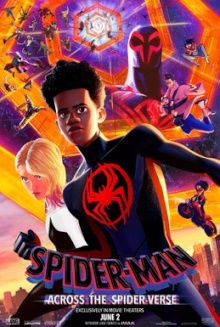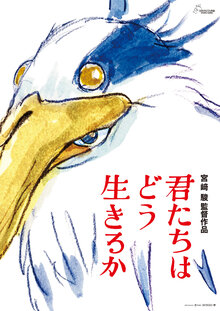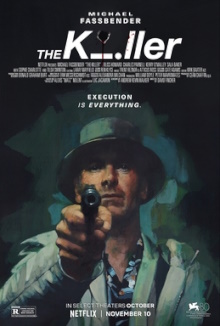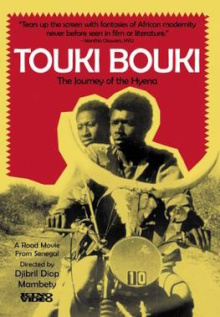I was a big fan of the first film and really wanted to catch this in the cinemas but was just too busy at the time. In the end, catching this on Netflix might have been wiser after all as this film is just too long and keeping up with its frenetic pace with so many characters and the dynamic changes of art style is quite exhausting. It does look great but it’s too overwhelming even for me. I was let down too by stale story beats like playing up Miles Morales being too busy as Spider-Man to attend to his real life or being forced to sacrifice the few to save the many. That said, it does have some decent character building moments as well so the verdict is kind of mixed. It definitely isn’t as good as the first film to me but I’ll still be looking out for the last part of what now looks like a trilogy.
Continue reading Spider-Man: Across the Spider-Verse (2023)The Boy and the Heron (2023)
It would probably be unwise to take Hayao Miyazaki at his word that this will be his final film and I’m not terribly fond of the quality of his later ones anyhow. Still, it would only be fair to watch at least one of his films properly in the cinema and so here we are. This one does finally feature a boy as the protagonist and apparently that’s because it’s semi-autobiographical. It also starts strongly with a firm grounding in reality but eventually veers off into the most fantastical and dream-like of Miyazaki’s worlds yet. There are all kinds of possible interpretations but none are terribly solid or boldly stated enough and so this is again mostly an exercise in pure imagination.
Continue reading The Boy and the Heron (2023)The Killer (2023)
David Fincher’s latest thriller is streaming on Netflix and while it’s as slick as his other films, it hasn’t made much of a splash and feels a little pointless. As its tagline suggests, it amounts to being competence porn and while it does start with the protagonist making a mistake, it only goes to show that even the most skilled and well prepared of professionals are subject to the vagaries of random chance. It’s a very satisfying procedural to watch as it shows every detail of the work of a professional hitman. But it’s not saying anything that is interesting and its subtext, that in the end, it’s the rich, white dudes who get to life, makes for a sour conclusion however true to life it may be.
Continue reading The Killer (2023)Genshin Impact
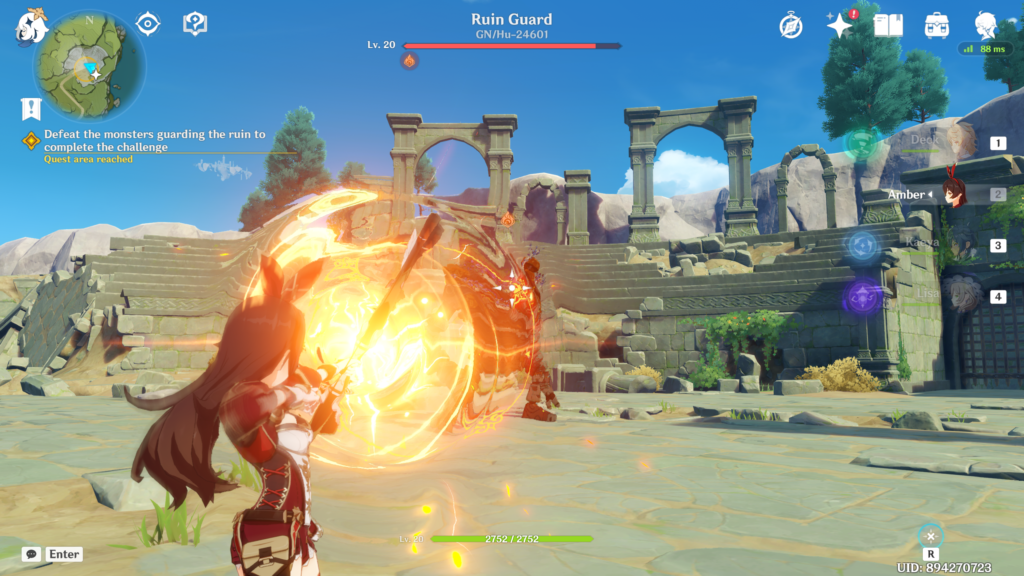
Genshin Impact has been out for a few years now and though I have little interest in it, its cultural influence has been undeniable. It’s crazy how the AI chat sites are full of characters made by kids from this game. It’s also fascinating that this a China made game but seems to be trying very hard to come across as Japanese instead. They’ve calibrated its appeal very precisely to sell it to the worldwide market. Since it’s famously free to play, I thought I’d at least try it out briefly just in order to be able to understand what it’s all about.
Continue reading Genshin ImpactAbang Adik (2023)
My wife insisted that we catch this in the cinemas and indeed it seemed like a good idea to support an artsy Malaysian film that’s enough good to win plaudits internationally. Indeed I really like how this is mostly set in Pudu, Kuala Lumpur and seemed to feature the lack of official identity documents in Malaysia as its driving theme. It’s the feature film debut of Lay Jin Ong who also wrote the script. However he was also a producer for Shuttle Life, film that I excoriated some time ago. This is far better than Shuttle Life but it falls into the same trap of being too old-fashioned where it counts and operates according to the principle that misery equals high art. Worst of all, it pulls a bait and switch in that it’s actually not at all about migrants in Malaysia nor the lack of identity papers.
Continue reading Abang Adik (2023)Touki Bouki (1973)
This is only the second Senegalese film to be featured here but it’s an old one, contemporaneous with the French New Wave in fact and so shows its influence. However it’s also distinctly African in its sensibilities which at times can make it difficult to decipher. Confusing as it is sometimes, I’m very pleased that it actually does have a plot and even if I can’t understand everything, I found the parts that I could understand absolutely hilarious and entertaining. At the same time, it offers a very satisfying portrait of what Senegal was like in that era, from the poorest to the very richest echelons of society. Just a fantastic film all around.
Continue reading Touki Bouki (1973)Science Articles (December 2023)
We have a wealth of cool science announcement to round off the year with.
- We’ll start with the announcement about how two separate teams have successfully entangled pairs of calcium monofluoride molecules. This is exciting in the context of quantum computing in which the basic unit of computing is a qubit. The question is what do we make qubits out of, physically? This is the first time that a qubit has been constructed out of pairs of single molecules and will for obvious reasons make it much more feasible to scale a quantum computer to a useful level. Of course so far this news is only about creating the entangled pairs which is a long way from an actual quantum computer.
- Next is a product that I’d actually want to use myself if it really works. A new company claims that they have a modified strain of bacteria that when introduced into a person’s mouth, will eventually outcompete the other native bacteria, making it the dominant strain in your oral microbiome. What makes their strain different is that it lacks the gene to create lactic acid from breaking down sugars and it is this acid that breaks down tooth enamel and causes cavities. Their version breaks down sugars into a small amount of alcohol instead. Theoretically a single application would last a lifetime and significantly reduce or perhaps even negate the need to brush teeth or visit a dentist. Incredibly the science behind it has been known since 2000 but it has never been made commercially available to the general public. The usual caution applies in that all this is claimed by the company itself and will need to be independently verified.
- Next are a couple of papers in the field of AI. The first of these describe an autonomous laboratory that successfully synthesized novel materials, specifically inorganic powders. The platform integrates machine learning models to propose synthesis recipes to attempt, a robotic laboratory that carries out the recipe, and characterization of the result through X-ray diffraction. When the recipe fails, the system is able to propose improved follow-up recipes to try. The system was able to create 41 novel compounds over 17 days of continuous operation. I’m sure how useful these novel compounds are or how this compares to the productive output of traditional laboratories staffed by humans. But it’s proof that AI-led scientific development is a real thing.
- The other one is a deep dive into a research project by Anthropic to understand what actually goes on inside a neural network. As we all know, these networks are essentially black boxes. We feed it an input and we get an output but it’s impossible to understand how it arrived at that output. So Anthropic built a very small and simple network and with the help of another network built an interface to understand and break down the first network into its smallest components. In particular, the smallest component isn’t a single neuron because the activation of a given neuron might have a specific meaning but that same neuron activated in combination with some others might mean something else entirely. The paper really only for the experts but it’s a fascinating attempt at looking inside the black box.
- Finally we end with a weird bit of science news to prove that reality is crazier than the imagination of any science-fiction writer. This article talks about the Japanese green syllid worm, a species that reproduces through a process called stolonization. This means that its rear end, or butt, can detach from the main body to swim away and seek out other detached rear ends from other worms to mate with. To make this possible, the rear end of the worm has its own set of eyes, antennae and a simple brain. The article goes on about the genes that regulate the development of this strange organism and speculate that at some point in its evolution, it started to develop a second head further down its body leading to this form of reproduction.
